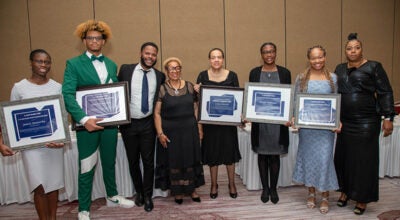School Board reviews facilities condition study
Published 5:41 pm Tuesday, March 14, 2023
|
Getting your Trinity Audio player ready...
|
The city’s School Board reviewed the condition of Suffolk Public Schools’ facilities during its Thursday, March 9 meeting.
SPS Director of Facilities and Planning Terry Napier provided the facilities condition assessment, with the help of Chief Financial Officer Wendy Forsman and Jeff Harris of RRMM Architects.
“In 2021, it’s a joint project with the city, we did a facilities study to basically take a review of the actual facility conditions of all of our buildings,” Superintendent Dr. John B. Gordon III said. “The facilities study not only had recommendations for building new schools, but it also had recommendations for preventative maintenance, student enrollment projections as well as any other major projects that needed to occur over the next five to 10 years. Both the City of Suffolk and the School Board agree that this is going to be our facility bible, so to speak, moving forward.”
The presentation provided the facilities study timeline being commissioned by City Council with the School Board’s agreement in fall 2018. In 2019, a contract was awarded to RRMM Architects, which worked with Cooperative Strategies to provide SPS with a final report in April 2021.
The document covers 18 schools and is 3,628 pages with the three major components — assessment executive summary, the executive summary appendix and the school facility condition assessment on individual schools. The appendix detailed information that was presented in public meetings such as the Joint Task Force Meeting Feb 25, 2020 and the joint City Council and School Board presentation Feb 23, 2021.
“The assessment is very thorough, it’s quite lengthy and our limited amount of time today will not allow us to venture too deeply into the weeds,” Napier said. “But hopefully you will gain a little more insight and understanding relating to the major components and how the assessment helps guide the SPS capital improvement plan and ties to the ongoing maintenance operation.”
The presentation continued with individual school facility condition assessments, as well as facility condition index examples. For the index, the high FCI rating indicated a need for repair or replacement. John F. Kennedy Middle School had the highest rating of 34.09% as “poor” with King’s Fork Middle School and Hillpoint Elementary School being 4.05% and 2.22% respectively, both being “excellent” conditions.
A section on deferred maintenance provided the cost for all 18 assessed schools and were calculated on a 10-year basis. For capital improvement planning, the top schools listed as School Board priorities are John F. Kennedy Middle School, Forest Glen Middle School, Elephant’s Fork Elementary School, John Yeates Middle School, Kilby Shores Elementary School and Nansemond Parkway Elementary School.
Jeff Harris of RRMM Architects explained how the pandemic affected project costs and timelines.
“I would say that every school system across the state, and even the country, are dealing with sticker shock on projects,” said Harris. “The two biggest contributing factors are the pandemic … we saw prices increase tremendously over that time as well as supply chain impacts. I would say prior to the pandemic, we kind of planned for a cost per square foot for new school projects to be in the upper $200s, maybe $290, $280 per square foot. But it seems like overnight we just jumped to almost $400 per square foot and in some cases, more than $400 per square foot.”
Gordon then led the discussion to choosing six schools for capital improvement planning.
“As a reminder to our school community, part of the input that the board used in choosing the six schools that are the first in our CIP related to everything Mr. Napier said — the age of the building, the current facility index and our preventative maintenance,” Gordon said. “The other two parts to that is that the School Board was very open about also prioritizing the schools that had mobile units.”
Gordon said this is something that was at the forefront of every CIP discussion that they had.
“The third part was we wanted to make sure that we were going to balance out when we were building new facilities within our cities,” he explained. “We weren’t going to build everything within the north, we weren’t going to build everything within the south or within the central.”
Gordon said this is why they have the rotation with JFK currently being the central part of their next project.
“The next project after that is Northern Shores in the north, and then we’re going to move to Forest Glen in the south and Elephant’s Fork back to the central,” he said. “This was the reason why that order was there. This was also the reason why the School Board, based on staff recommendations and to eliminate any confusion, kept the CIP the same for multiple years. The CIP has not changed, the CIP is based on the order of facility conditions index.”
Nansemond Borough School Board member Dr. Judith Brooks-Buck thanked both Napier and Harris for the work, while also following up on Dr. Gordon’s clarification.
“I’m glad that you mentioned that our priorities have not changed over the years, not at all. And we still have them in place,” Brooks-Buck said. “I just want to thank you for the work that you all have done on this, and for keeping these things going.”






